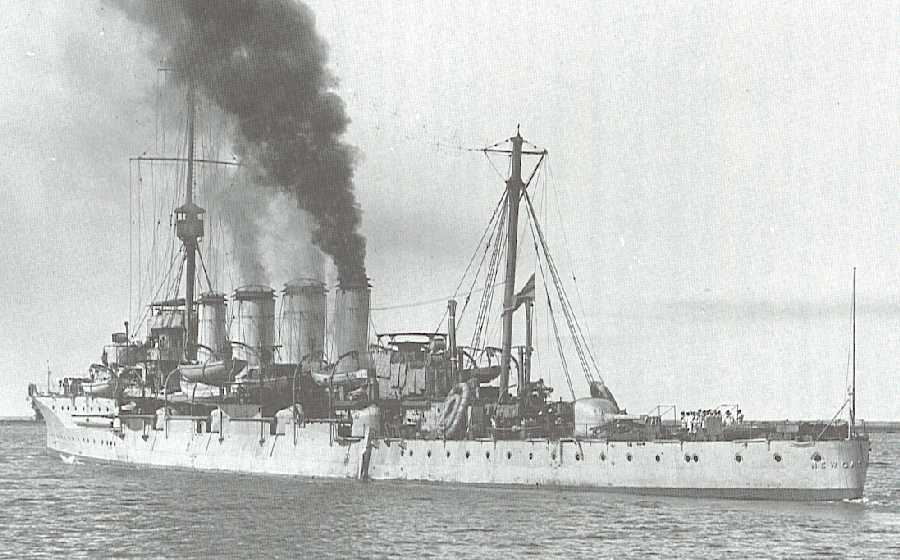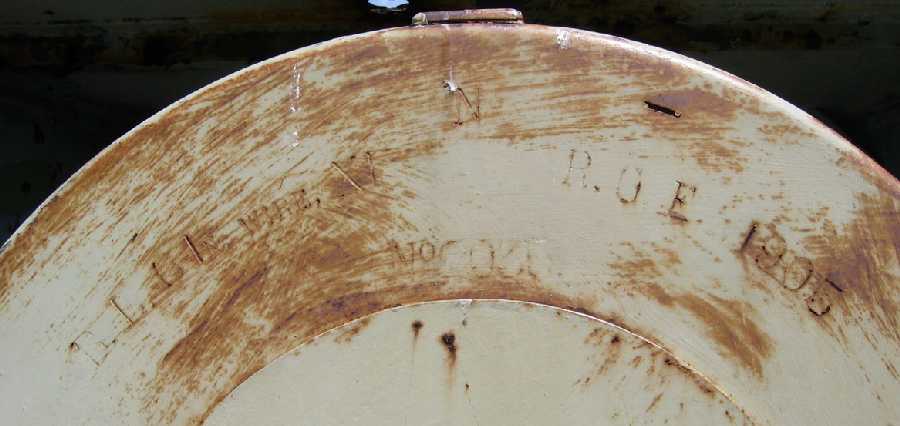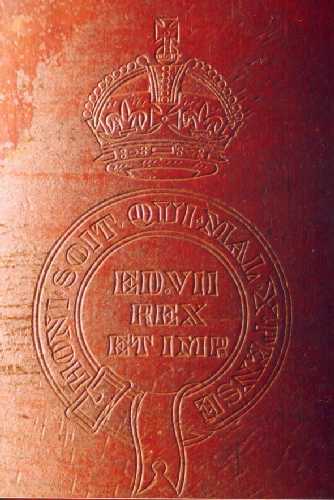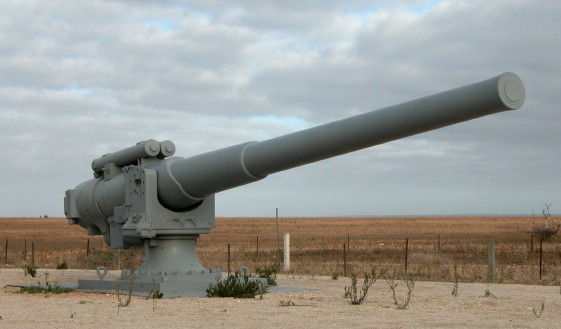Introduced on HMS Black Prince in 1906 and subsequently used as secondary guns on many pre-dreadnoughts. These were the first 6" (15.2 cm) guns of 50 calibers to be mounted on a European ship. These guns were found to be too heavy to be aimed manually, especially on the smaller cruisers. For that reason, hydraulic power gear was added to some mounts in the latter part of World War I.
During World War II, these guns were used on auxiliary warships, armed liners, DEMS and Ocean Boarding Vessels. They were also extensively used in Australian coast defenses constructed prior to World War II.
Constructed of a tapered inner A tube, A tube, wire, full length jacket, breech ring and breech bush screwing into the A tube. Mark XI* differed in having a thicker inner A tube and the use of cannelured rings at the two forward shoulders. A total of 177 were built, which were 34 Mark XI, 18 Mark XI*, 124 Mark XI* with a slightly different breech ring for PVI mountings and one "H" Mark XI* which was a Coventry ordnance gun with Holmstrom breech mechanism. This last gun was linered down to 3 inches (7.62 cm) and used for experimental purposes. Of the remainder, 126 remained in service as of 1939. Twenty-six Mark XI guns were used in Australian coastal batteries prior to World War II and many others were used in emergency coastal defense batteries during the war. At least one Australian and two South African guns still survive, as can be seen in the photographs below.
| Designation | 6"/50 (15.2 cm) BL Mark XI and XI* |
|---|---|
| Ship Class Used On | Last three King Edward VII class
Duke of Edinburgh, Bristol, Falmouth and Chatham cruiser classes Monitor Marshal Ney |
| Date Of Design | 1905 |
| Date In Service | 1906 |
| Gun Weight | 19,237 lbs. (8,726 kg) |
| Gun Length oa | 309.7 in (7.867 m) |
| Bore Length | 300.0 in (7.620 m) |
| Rifling Length | N/A |
| Grooves | N/A |
| Lands | N/A |
| Twist | N/A |
| Chamber Volume | 2,030 in3 (33.27 dm3) |
| Rate Of Fire | 5 - 7 rounds per minute 12 |
- ^
The Rate of Fire figure given above is found in references for British guns of this caliber, but "Warrior to Dreadnought: Warship Development, 1860-1905" quotes Jellicoe's 1906 figures for rates of fire for these guns in gunlayers' tests and in battle practice and notes that the latter figures corresponded well to those actually attained by the Japanese at Tsushima:
Gunlayers Test 12 rounds per minute Battle Practice 4 rounds per minute - ^In "Jutland: An Analysis of the Fighting" by John Campbell, it is stated that almost all British capital ships had few or slow hoists for their 6" (15.2 cm) guns and that once the ready ammunition was used up, the rate of fire dropped to about 3 rounds per minute. For light cruisers the rate of supply was was about three to five rounds per minute per gun and usually closer to the lower figure.
| Type | Bag |
|---|---|
| Projectile Types and Weights | CPBC: 100 lbs. (45.36 kg)
CPC 2crh: 100 lbs. (45.3 kg) CPC 4crh: 100 lbs. (45.3 kg) HE 4crh: 100 lbs. (45.3 kg) |
| Bursting Charge | CPC 4crh: 7.5 lbs. (3.4 kg)
HE 4crh: 13.3 lbs. (6.0 kg) |
| Projectile Length | CPC 4crh: 23.5 in (59.7 cm)
HE 4crh: 22.9 in (58.2 cm) |
| Propellant Charge | 32.1 lbs. (14.6 kg) MD26
33.1 lbs. (15 kg) SC150 |
| Muzzle Velocity | 2,937 fps (895 mps) |
| Working Pressure | N/A |
| Approximate Barrel Life | N/A |
| Ammunition stowage per gun | Pre-dreadnoughts: 200 rounds
Cruisers: N/A Marshal Ney: 100 rounds |
| Elevation | Distance |
|---|---|
| 13 degrees | 11,200 yards (10,240 m) |
| 15 degrees | 14,310 yards (13,085 m) |
During the Falklands Battle of 1914, these 6" (15.2 cm) guns on HMS Glasgow were reported to have been badly outranged by the much smaller German 10.5 cm (4.1") guns on SMS Leipzig. However, the heavier British shells with their lyddite bursters were significantly more effective than the lighter German ones.
| Range | Vertical KC Plate |
|---|---|
| 3,000 yards (2,740 m) | 3.0 in (7.6 cm) |
Data from "The Grand Fleet: Warship Design and Development 1906-1922" for an angle of obliquity of 30 degrees and a striking velocity of 1,502 fps (458 mps). Projectiles were salt-filled (blind).
| Range | Vertical KC Plate |
|---|---|
| 3,000 yards (2,740 m) | 3.5 in (8.9 cm) |
Data from "The Grand Fleet: Warship Design and Development 1906-1922" for an angle of obliquity of 30 degrees and a striking velocity of 1,746 fps (532 mps). Projectiles were salt-filled (blind).
| Designation | Single Mounts
King Edward VII (10) and Duke of Edinburgh (10): PV 1a Bristol (2): PV* 1a Falmouth (8) and Chatham (8): PVI 2a Marshal Ney (6) 3a: PV |
|---|---|
| Weight (less shield) | N/A |
| Elevation | PV and PV*: -7 / +13, later +20 degrees on some
PVI: -7 / +15 degrees |
| Elevation Rate | Manual operation, only |
| Train | about +150 / -150 degrees |
| Train Rate | Manual operation, only |
| Gun recoil | N/A |
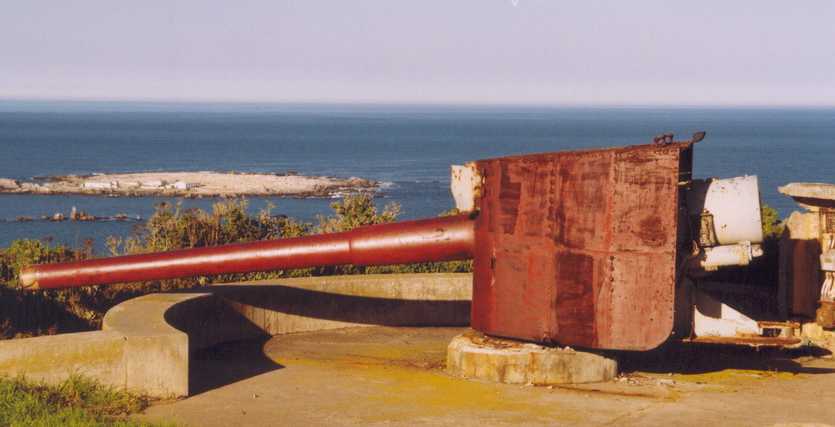
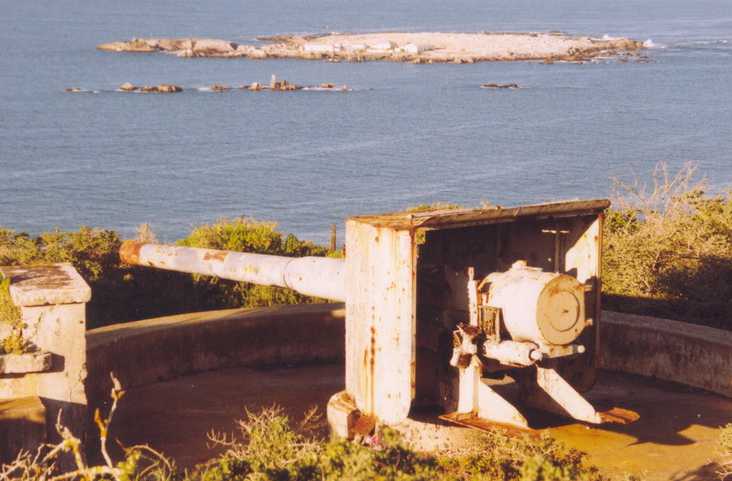
Engraving reads as follows:
| Engraving | Explanation |
|---|---|
| N | Navy and top of gun (orientation that results in the least amount of droop) |
| B.L. 6 In wire XI | Breech Loading 6 inch (15.2 cm) gun of wire wound construction Mark XI |
| R.G.F. 1905 | Built at the Royal Gun Factory in 1905 |
| No2035 | Serial number 2035 |
Engraving reads as follows:
| Engraving | Explanation |
|---|---|
| Honi soit qui mal Y pense | "Shame on him who thinks ill of it" - The motto of the Order of the Garter, founded by King Edward III in 1348 |
| ED. VII Rex et Imp. | Edward VII, King of Britain in 1905 when this gun was manufactured |
Engraving on breech reads as follows:
| Engraving | Explanation |
|---|---|
| AN | Australian Navy and top of gun (orientation that results in the least amount of droop) |
| B.L. 6 In wire XI | Breech Loading 6 inch (15.2 cm) gun of wire wound construction Mark XI |
| VSM 1912 | Built at Vickers Sons & Maxim in 1912 |
| No2305 | Serial number 2305 |
Photographs from the Australian War Memorial
6"/50 (15.2 cm) Mark XI used as Australian Coastal Artillery: P03984.001, 129982, 130004 and 130005
"Warrior to Dreadnought: Warship Development 1860-1905" and "The Grand Fleet: Warship Design and Development 1906-1922" both by D.K. Brown
"Big Gun Monitors: The History of the Design, Construction and Operation of the Royal Navy's Monitors" by Ian Buxton
"Jutland: An Analysis of the Fighting", "Naval Weapons of World War Two" and "British Naval Guns 1880-1945 No 11" article in "Warship Volume VII" all by John Campbell
"Cruisers of the Royal and Commonwealth Navies" by Douglas Morris
"British Battleships: 1860 - 1950" by Oscar Parkes
"Graf Spee's Raiders: Challenge to the Royal Navy, 1914-1915" by Keith Yates
---
"The Mavens' Word of the Day" by Random House Books
20 October 2008 - Benchmark
11 February 2012 - Updated to latest template
30 November 2015 - Updated links to Australian War Memorial
09 May 2019 - Converted to HTML 5 format, reorganized notes

